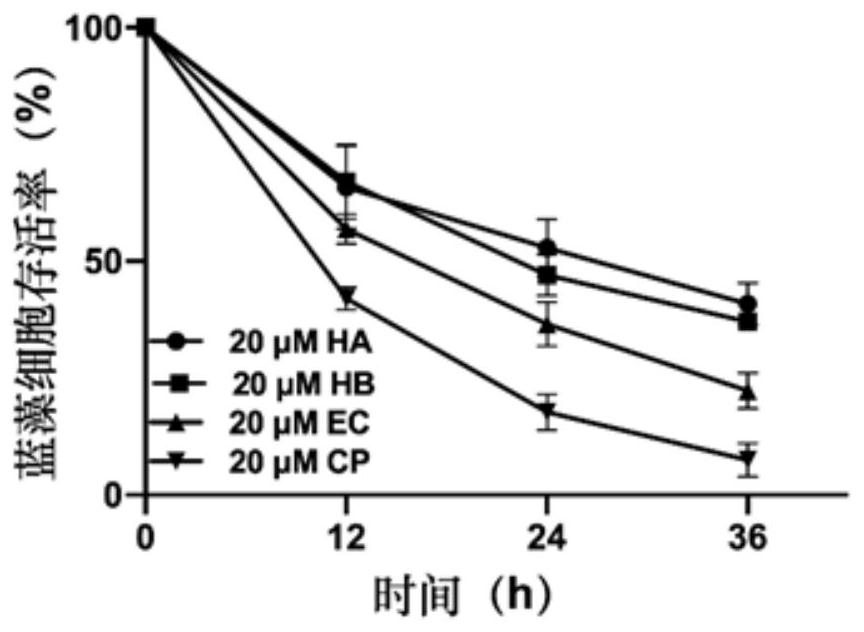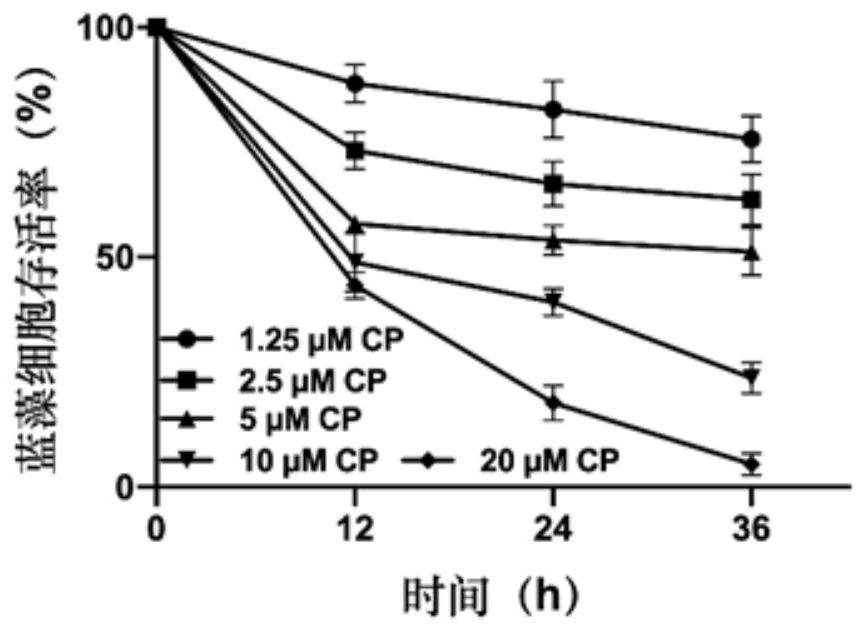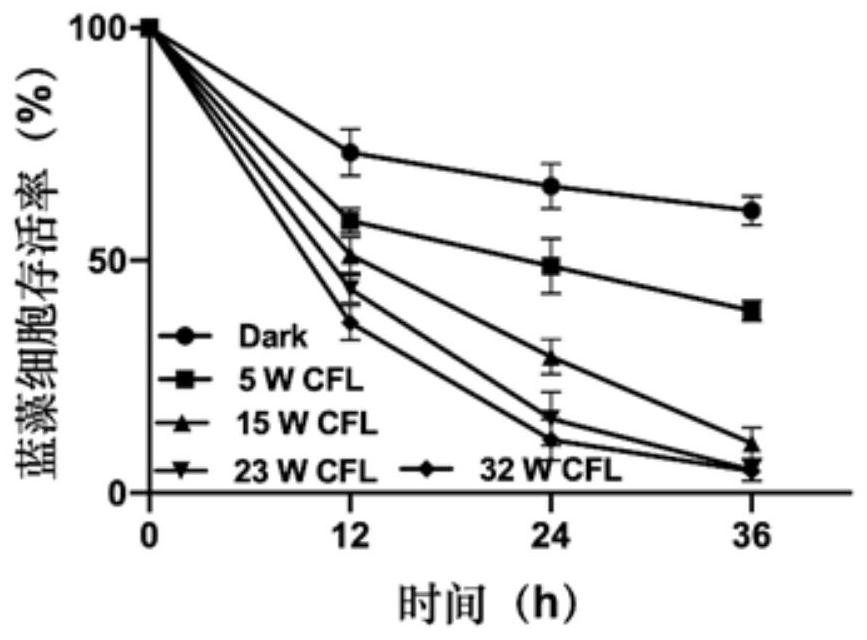Method for inhibiting harmful algae by applying perylenequinone compound
A compound, perylenequinone technology, applied in the field of water pollutant treatment, can solve the problem of lack of economical and effective control of cyanobacteria blooms, and achieve the effect of good algae inhibition and low cost
- Summary
- Abstract
- Description
- Claims
- Application Information
AI Technical Summary
Problems solved by technology
Method used
Image
Examples
Embodiment 1
[0043] Detection method: Perylene quinone compounds are effective against Microcystis aeruginosa (FACHB-905), Anabaena (FACHB-82), Astringentia floridae (FACHB-1040), Oscillator algae (FACHB-528), A. Algae (FACHB-920) survival rate with hemacytometer. The counting of the counting board uses the Tangmai counting method to divide the large square into 25 middle grids, and each middle grid is divided into 16 small grids, that is, 25×16 type. The calculation formula is the number of algae cells / L=N×5× 10×dilution factor, N is: the total number of algae cells in the five squares. [Example 1] The inhibitory effect of cercosporin (CP) on Microcystis aeruginosa (FACHB-905)
[0044] Adjust the density of algal cells to 1.6×10 7 cells / mL cell suspension, inoculated in 6-well plate, 4 mL per well; 20 μM cercosporin (CP) was added to the experimental group, and three replicate wells were set up in the experimental group and control wells respectively. Place the 6-well plate at room tem...
Embodiment 2
[0048] [Example 2] The inhibitory effect of cercosporin (CP) on Anabaena (FACHB-82)
[0049] Adjust the density of algal cells to 1.6×10 7 cells / mL cell suspension, inoculated in 6-well plate, 4 mL per well; 20 μM CP was added to the experimental group, and three replicate wells were set up in the experimental group and control wells respectively. Place the 6-well plate at room temperature and react under 23W white light. The cells at 12h, 24h, and 36h were counted respectively, and compared with the cells in the control group, the survival rate was determined. The formula for calculating the survival rate is as formula (1) in Example 1.
[0050] The results showed that after 36 hours, the cell survival rate of 20μM CP inhibiting the effect of Anabaena was 23%.
Embodiment 3
[0051] [Example 3] Inhibitory effect of cercosporin (CP) on A. water blooms (FACHB-1040)
[0052] Adjust the density of algal cells to 1.6×10 7 cells / mL cell suspension, inoculated in 6-well plate, 4 mL per well; 20 μM CP was added to the experimental group, and three replicate wells were set up in the experimental group and control wells respectively. Place the 6-well plate at room temperature and react under 23W white light. The cells at 12h, 24h, and 36h were counted respectively, and compared with the cells in the control group, the survival rate was determined. The formula for calculating the survival rate is as formula (1) in Example 1.
[0053] The results showed that: after 36h, the cell survival rate of 20μM CP inhibiting the effect of A. water bloom was 21%.
PUM
 Login to View More
Login to View More Abstract
Description
Claims
Application Information
 Login to View More
Login to View More - R&D
- Intellectual Property
- Life Sciences
- Materials
- Tech Scout
- Unparalleled Data Quality
- Higher Quality Content
- 60% Fewer Hallucinations
Browse by: Latest US Patents, China's latest patents, Technical Efficacy Thesaurus, Application Domain, Technology Topic, Popular Technical Reports.
© 2025 PatSnap. All rights reserved.Legal|Privacy policy|Modern Slavery Act Transparency Statement|Sitemap|About US| Contact US: help@patsnap.com



